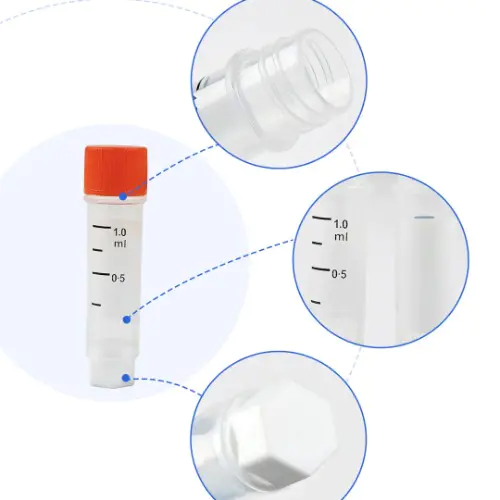When setting up or expanding a laboratory, selecting the right cryovials is crucial for ensuring the safety and integrity of your samples. Cryovials are essential for storing biological materials at ultra-low temperatures, making them indispensable in research and clinical settings. With a plethora of options available, it can be daunting to choose the right cryogenic vials for your specific needs. In this guide, we'll explore the various types of cryovials, assess their quality, and provide tips on finding reliable suppliers. Whether you're a seasoned professional or new to laboratory management, this article will help you make informed decisions. Cryogenic vials manufacturer play a significant role in determining the quality and reliability of these essential laboratory tools.
Table of contents:
Understanding Different Types of Cryogenic Vials Available
How to Assess the Quality of Cryovials Before Purchase
Tips for Finding Cost-Effective Cryogenic Vials Suppliers
Ensuring Compatibility of Cryovials with Laboratory Equipment
Cryogenic vials come in a variety of designs and materials, each suited for different applications. The most common types include external thread vials, internal thread vials, and self-standing vials. External thread vials are favored for their airtight seals, which minimize the risk of contamination. Internal thread vials, on the other hand, offer a more compact design, making them ideal for storage in tight spaces. Self-standing vials are designed with a flat bottom, providing stability during handling and storage. The material of the vial, typically polypropylene, is chosen for its durability and resistance to cracking at low temperatures. When selecting cryogenic vials, it's important to consider the specific requirements of your laboratory, such as storage space, temperature conditions, and sample volume.

Assessing the quality of cryovials is essential to ensure the safety and longevity of your samples. High-quality cryovials are made from medical-grade materials that are free from contaminants and can withstand extreme temperatures. Look for vials that have been tested for leakage and have a proven track record of performance in cryogenic conditions. The vials should also have clear, legible markings for easy identification of samples. It's advisable to choose vials from reputable manufacturers who adhere to international quality standards. By doing so, you can be confident that the vials will perform reliably under the demanding conditions of a laboratory environment. Additionally, consider the compatibility of the vials with your existing storage systems and equipment. This will ensure seamless integration and prevent any disruptions in your workflow.
Finding a cost-effective supplier for cryogenic vials is crucial for managing laboratory expenses without compromising on quality. Start by researching suppliers who specialize in laboratory equipment and have a good reputation in the industry. Compare the prices of different suppliers to identify competitive offers, but be wary of prices that seem too good to be true. It's also important to consider the supplier's delivery times and customer service. A reliable supplier will offer timely deliveries and responsive support to address any issues that may arise. Additionally, inquire about bulk purchase discounts, as buying in larger quantities can significantly reduce costs. By carefully evaluating suppliers and negotiating terms, you can secure high-quality cryovials at a reasonable price.
Ensuring that cryovials are compatible with your laboratory equipment is essential for smooth operations. Before purchasing, verify that the vials fit well with your existing storage racks, freezers, and handling tools. This will prevent any issues with storage efficiency and sample retrieval. It's also important to consider the vial's closure system, as some equipment may require specific types of seals. Wholesale Cryogenic Vials are designed to be versatile and compatible with a wide range of laboratory equipment, making them a reliable choice for many laboratories. By selecting vials that integrate seamlessly with your current setup, you can maintain an organized and efficient laboratory environment.
In summary, selecting the right cryovials involves understanding the different types available, assessing their quality, finding reliable suppliers, and ensuring compatibility with laboratory equipment. By following these guidelines, you can make informed decisions that enhance the efficiency and safety of your laboratory operations. Whether you're purchasing cryovials for the first time or looking to upgrade your existing stock, this guide provides the essential information you need.